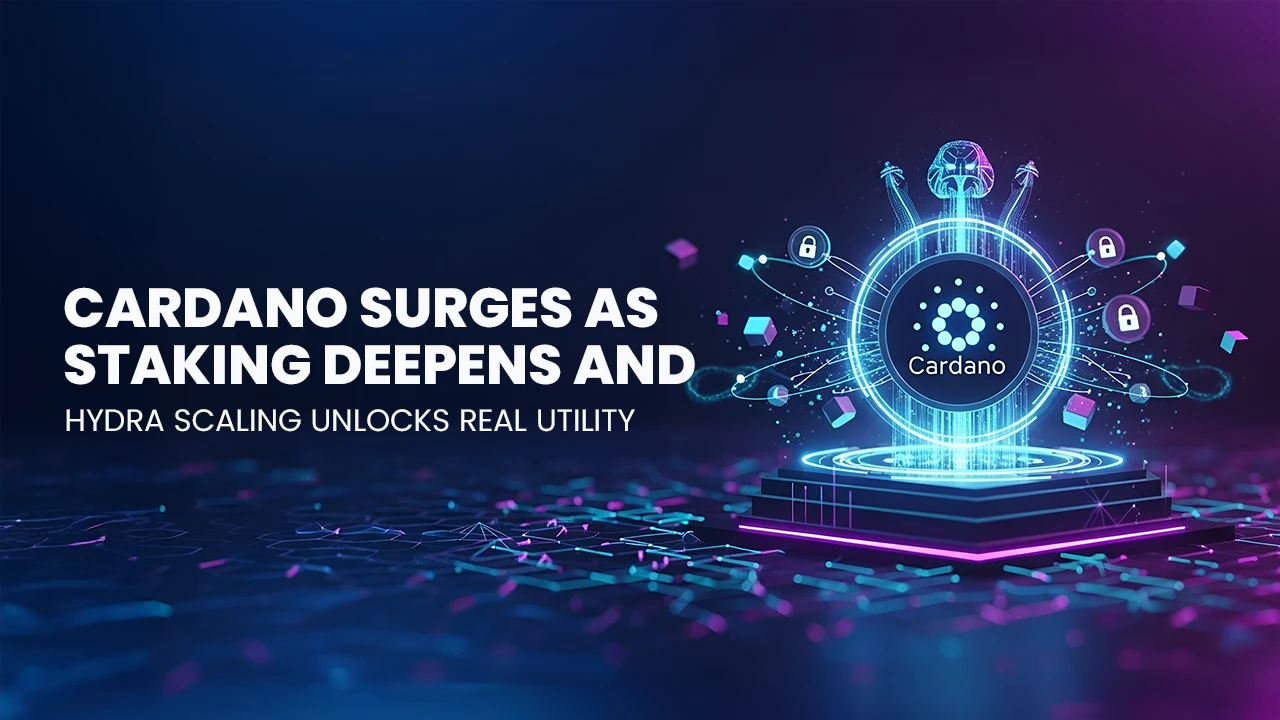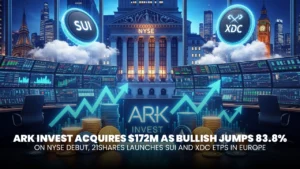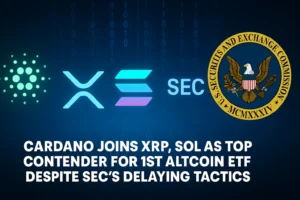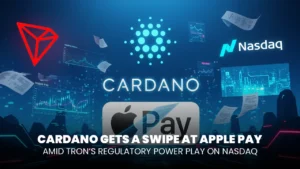Is Cardano Back on Track: How Hydra and Exchange Staking Revived a 10% ADA Rally

Cardano is back in motion. ADA price advanced in recent sessions, and an exchange partner, Bitrue, announced it will delegate a portion of the custody of ADA to community stake pools. The move tightens supply on the exchange, reinforces network security, and signals a bet on on-chain yields.
- ADA Posts a Sharp Daily Gain as Spot Flows Return
- Bitrue’s Community Staking Signal: Why It Matters
- Hydra and the Developer Roadmap: Capacity First, Privacy Next
- Payroll and Price Volatility: A Practical Demand Curve
- Market Watch: How to Read the Signals
- Today’s Catalysts and What to Verify Next
- Conclusion
- Frequently Asked Questions About ADA Price Surge, Bitrue Staking, and Hydra ZK Update
- How does Bitrue’s community staking affect ADA holders?
- Why is Hydra important to near-term usage?
- Is Cardano a DPoS chain?
- What is the link between payroll research and ADA demand?
- What should investors watch over the next month?
- Glossary of Key Terms
At the same time, developers work around Hydra, and zero-knowledge tooling keeps the scaling story in view. These threads meet in one place. A proof-of-stake network that leans on stake delegation, similar in spirit to Delegated Proof of Stake (DPoS), is seeing new capital signals at the edge and continued throughput work at the core.
For investors, the test is simple. Do fees compress, do confirmations speed up, and does staking become easier to access through regulated venues? Early data points say yes. Trading coverage shows ADA climbing more than 10 percent in a day, while TradingView flagged a break above 0.75 as Bitrue’s staking plan went live.
The adoption angle extends beyond price. Recent payroll research notes how firms are adapting to crypto compensation when volatility rises, with stablecoins and split-pay frameworks complementing native-asset salaries.
ALSO READ: TRON Reboots WBTC as This Gaming Giant Picks Sui to Launch New Survival MMO
That debate matters to Cardano’s economy because usable payments and predictable staking returns are two sides of the same coin. A network that can clear small payments cheaply while making staking straightforward can serve both businesses and retail users.
ADA Posts a Sharp Daily Gain as Spot Flows Return
Markets rewarded Cardano with a double-digit daily move as liquidity rotated back into large-cap alts. Investing.com recorded ADA up roughly 10 % on Sunday trading, with the session marking the strongest single-day jump since spring.
Momentum followed a run of headlines, led by community staking from Bitrue and ongoing attention to Cardano’s scaling path. For traders, the key takeaway is confirmation that buyers will chase upside when credible catalysts land. For allocators, the message is more patient.
Track whether the depth on spot books and derivatives stays healthy after the surge. Liquidity that persists is a better signal than a candle.
TradingView’s brief noted ADA clearing 0.75 and tied that move to Bitrue’s staking launch. Resistance breaks are only as good as follow-through. If exchange order books shift from range trading to higher lows, the breakout earns more trust.
If the move fades back into prior ranges, watch for the next catalyst from the exchange staking program or developer releases. Today’s read is constructive because the price item arrived alongside a concrete operational change.
Bitrue’s Community Staking Signal: Why It Matters
We will be staking ADA held in our custody with community stake pool operators to support decentralization and security.”
— Bitrue program announcement, October 12, 2025
The initiative aims to support decentralization and network security while encouraging longer holding periods through staking rewards.
An exchange moving house funds into community pools is not just a headline. It changes the float profile, reduces idle balances, and aligns a venue with the validator economy. Aggregate effects depend on size and duration, but the direction is clear. Less passive ADA on the exchange, more staked ADA working to secure the chain.
The program has been amplified by Cardano ecosystem accounts that track staking policy and community pool health. Operator commentary highlights how external delegations can stabilize pool economics and distribute stake across smaller operators.
That distribution matters in a delegation-based proof-of-stake system, which investors often described as DPoS-style because token holders empower professional operators to produce blocks. Distribution reduces concentration risk and makes epoch-to-epoch participation more predictable.
Bitrue’s campaign dominated timelines, with pools and analysts posting the details and voting links.
Pretty awesome to see @BitrueOfficial organizing this community delegation program and working with @TheBlock__ to get it out there.
Consider voting for EPOCH! Home of stress free staking. 👇 https://t.co/ho99fHvPWz
As a SPO of 4.5 years and almost 3200 blocks minted, we are… https://t.co/BeFXc5M5ER
— EPOCH Pool | no stress dRep (@EPOCHpool) October 12, 2025
Hydra and the Developer Roadmap: Capacity First, Privacy Next
Attention is returning to Hydra, the layer-2 family built to route high-frequency interactions off-chain and settle results on L1. Recent roundups reiterated that Hydra’s production 1.0 tag earlier this year positioned Cardano for near-term app gains, from lower fees to faster confirmations.
Analysts continue to cite Hydra when they discuss ADA support levels because throughput stories change cost curves for payments and market-making. When users feel speed and cost improvements, usage sticks.
Media recaps have underlined the same arc. CoinCentral’s write-up called Hydra 1.0 a Live milestone for faster transactions and lower fees, tying the roadmap to real dapp performance. The overlap between Mithril releases and node upgrades ensures full-stack readiness. The picture is familiar across chains.
ALSO READ: Ark Invest’s $10M Push Into Securitize Signals Wall Street’s Big Shift to Tokenization
Capacity drives first-order UX in trading and payments. Privacy expands second-order use cases like credential checks or compliant settlement. Cardano’s ZK research track continues in parallel, with industry outlets watching for audited libraries and wallet integrations.
The recent tweets capture the moment. Charles Hoskinson cheered a new performance era, referencing the throughput path tied to Hydra.
Hydra is going to have an awesome 2026 https://t.co/9N3R9YIH6K
— Charles Hoskinson (@IOHK_Charles) October 9, 2025
Payroll and Price Volatility: A Practical Demand Curve
Crypto payroll platforms are adjusting to market swings. Recent analysis noted that startups are mixing native-asset pay with stablecoin tranches to smooth volatility. Cardano’s inclusion in these discussions demonstrates how staking returns and payments infrastructure intersect.
If treasury teams can lock parts of payroll in stablecoins, while staking native ADA on predictable schedules, they gain flexibility without abandoning upside. That flexibility matters when hiring across global teams. The more that payroll software supports carded onboarding and compliant reporting, the easier it is for firms to keep ADA in their treasury mix.
A second piece from the same source expanded on the same theme a week earlier. The takeaway was direct. Younger workers accept stablecoin pay more readily, and employers want tools to hedge volatility while staying in crypto ecosystems. Cardano benefits when pay rails are cheap and staking is simple. In that world, users earn yield while spending small sums without friction. That is where L2 and ZK work connects back to paychecks.
Market Watch: How to Read the Signals
Short-term traders will track three items. First, does ADA hold above the reclaimed resistance noted by TradingView? Second, do exchange staking flows grow, and does Bitrue expand the program beyond an initial set of pools? Third, do dapps push Hydra-aligned updates that reduce fees and latency? If all three trend up, the price move has fundamental support. If not, expect range trading until the next catalyst appears.
Longer-horizon allocators should keep a separate checklist. Observe stake pool saturation and distribution statistics to confirm healthy delegation. In networks that use stake delegation, often compared to DPoS models for their operator-delegator split, dispersion of stake aligns security with performance. Next, follow the zero-knowledge track for audited libraries. Finally, monitor merchant and payroll integrations that use Cardano for small, frequent payments. These are slow metrics, but they guide sizing decisions better than intraday prints.
ALSO READ: Circle Deploys USDC and CCTP V2 on XDC Network to Simplify Cross-Border Payments
Today’s Catalysts and What to Verify Next
| Theme | What Happened | Why It Matters | What To Verify Next |
| Price | ADA jumped about 10 percent in a day | Confirms buyers’ return on catalysts | Depth and spreads after the move, support holding above reclaimed levels |
| Exchange Staking | Bitrue launched a community delegation to stake pools | Reduces idle exchange supply, strengthens decentralization | Size and duration of delegated ADA, pool selection disclosures |
| Throughput | Hydra developer path remains a focal point | Lower fees and faster confirmations drive usage | Wallet and dapp releases that expose Hydra flows |
| Payroll | Startups adopt stablecoin splits with crypto pay | Keeps ADA in treasury mix while hedging | Vendor support for Cardano payouts, compliance tooling |
| Governance | Delegation model, often described as DPoS-style by investors | Predictable performance and finality for L2 and staking | Pool distribution, epoch participation rates |
Conclusion
Cardano’s latest push blends market action with operational change. ADA rallied on a day when Bitrue said it would delegate custody funds to community stake pools, a concrete move that shortens exchange float and supports decentralization.
Developer narratives continue to gather around Hydra and planned zero-knowledge tooling, which together target faster interactions and more privacy-aware verification. The governance spine remains a delegation model often described as Delegated Proof of Stake or DPoS-style, where token holders empower operators to keep performance and uptime steady. For investors, the path to conviction runs through data.
Can ADA hold reclaimed levels? Do exchange staking balances grow. Fees and confirmation times decline as Hydra spreads. Clear answers to those questions will decide whether today’s momentum becomes next quarter’s baseline.
Frequently Asked Questions About ADA Price Surge, Bitrue Staking, and Hydra ZK Update
How does Bitrue’s community staking affect ADA holders?
It reduces idle exchange balances and moves ADA into stake pools that secure the network. That can support price by lowering circulating supply on exchange, and it strengthens validator economics for pool operators.
Why is Hydra important to near-term usage?
Hydra routes frequent interactions off-chain with settlement on L1. Users should see lower fees and faster confirmations as wallets and dapps adopt it, especially for payments and market-making.
Is Cardano a DPoS chain?
Cardano runs proof of stake with stake delegation to pools. Many investors describe the effect as DPoS-style because token holders delegate to professional operators who produce blocks and maintain uptime. The model supports predictable performance for L2 settlement and staking.
What is the link between payroll research and ADA demand?
Firms that split salaries between stablecoins and native assets can keep ADA in treasury while hedging volatility. If fees stay low and staking is easy, payroll integrations can translate into steady transactional demand.
What should investors watch over the next month?
Confirm that the price holds above reclaimed price levels, monitor Bitrue’s staking size and duration, track wallet and dapp updates that mention Hydra flows, and look for audited ZK libraries to move from prototype to production.
Glossary of Key Terms
- Stake Delegation: Assigning ADA to a pool that participates in consensus and earns rewards.
- Delegated Proof of Stake (DPoS-style): A description investors use for delegation models where token holders empower operators to secure the network.
- Hydra: A layer-2 family that enables fast, low-fee transactions with settlement on Cardano’s base chain.
- Community Stake Pool: An independently run validator pool on Cardano that receives delegated stake from holders.
- Exchange Delegation: An exchange staking its custody balances to network pools to earn rewards and support security.
- Throughput: How many transactions a network can process per second.
- Latency: The time it takes for a transaction to confirm.
- Stablecoin Split Pay: Paying part of compensation in stablecoins to hedge volatility.
- Zero-Knowledge (ZK): Cryptographic proofs that verify statements without exposing underlying data.
- Epoch: A fixed period used by Cardano to structure staking and reward cycles.




